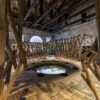This pious tradition during Holy Week calls for visiting at least seven churches for prayer and reflection.
If you’re one of the millions of Filipinos who practice their Catholic faith, Maundy Thursday and Good Friday are two days on the long weekend that you reserve for Visita Iglesia. Why seven churches? Because the number corresponds to Christ’s Seven Last Words (some of the faithful choose to visit 14 churches to match the 14 Stations of the Cross).
Whether or not you’re Catholic, you have to appreciate the epic story that is the Passion of the Christ or those final moments leading to his crucifixion and death. On Maundy Thursday, Christ washed the feet of the apostles and had his Last Supper with them (the basis for the Holy Communion during Mass). On Good Friday, Christ was betrayed by Judas, denied by Peter, tried and sentenced to death, and crucified.
These two days precede the celebration of his resurrection, thus many choose to observe quietness, make their own sacrifices and spend their time reflecting, praying and visiting churches.
If you’re in the city for the long weekend, here are seven of the most beautiful churches in Metro Manila to visit.
1. Malate Church
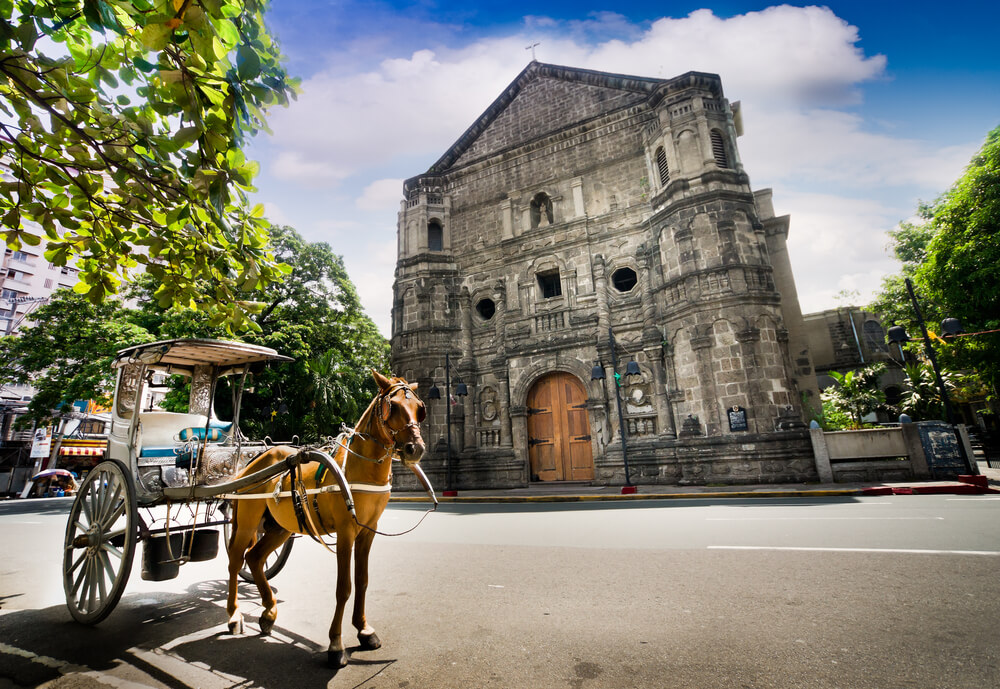
Our Lady of Remedies Parish, more popularly known as Malate Church, was designed in the Mexican-Baroque style. The church overlooks a plaza and across Roxas Bulevard is Manila Bay. It’s one of those rare pockets of beautiful spaces in Manila. I used to work in Port Area, and driving by the church when it was all lit up and fairy lights were strung across the plaza, it was quite a beautiful sight.
The church was completed in 1680. During the British Occupation of Manila in 1762 to 1764, which was part of the Seven Years’ War between Great Britain and France (Spain sided with France, hence we were dragged into it), Malate Church was occupied by the Brits who turned it into their headquarters. During the Japanese Occupation, the church and convent were burned down. The Columbian friars rebuilt it in the 1950s; and restoration work of the church’s bricks and stone was completed in 1978.
2. San Agustin Church
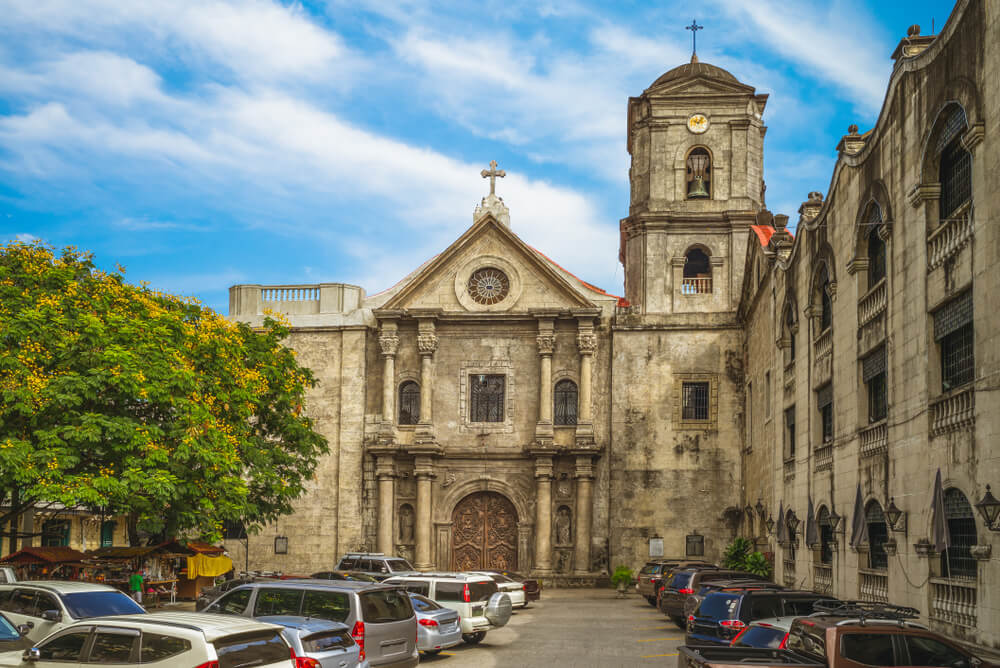
The church as we know it today is the third built by the Agustinians, having been destroyed by fire twice. The first was made of bamboo and nipa in 1571; the second made of wood in 1583.
They must have thought, well, this isn’t working! Three years later, they began building the new church using adobe stone from Mecauayan, Binangonan and Rizal. During the Battle of Manila, however, the church was sacked (while the British were in their headquarters at Malate Church).
In 1863, it was the only public structure that survived a strong earthquake. The church is one of four UNESCO Heritage Sites under the collective title Baroque Churches of the Philippines. San Agustin has a wonderful museum that’s worth a visit and the interior architecture is amazing—the cloisters best of all.
To me, it’s the most beautiful church in the Philippines. And I’m hesitant to mention that it’s the most Instagrammable church in Manila—but of course you’re going there for history and prayer, right? Right?
3. UP Diliman Church
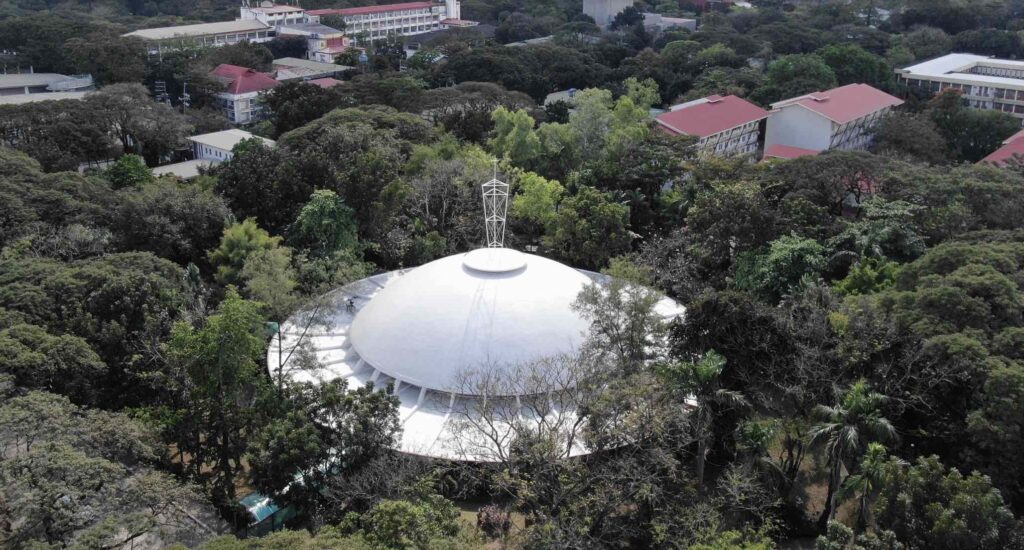
Another favorite church for an intimate, personal experience is the Parish of the Holy Sacrifice, which I first discovered as a journalism student at the University of the Philippines in Diliman. It was a quiet place across the shopping center where we bought our blue books and made deals with God to pass exams or for safe protests on campus or in the streets of Manila.
Constructed in 1950s, the church is the country’s first round church with an altar in the middle. It is recognized as a National Historical Landmark and Cultural Treasure. Five artists who would later be designated National Artists worked on the church—one for architecture, three for visual arts, and one for sculpture.
UP Church was designed by Leandro Locsin, known for his modern style. Inside, there are 15 murals depicting the Stations of the Cross by Vicente Manansala who was then assisted by Ang Kiukok (the 15th mural depicts the Resurrection of Christ and is painted on the wall of the sacristy); Arturo Luz did the floor mural “River of Life” executed in terazzo and radiating from the altar. The cross depicting the Risen Christ and marble altar were designed by Napoleon Abueva.
What an absolute treasure! These five artists worked on the church when they were young designers. Architect Locsin was 27 when he was commissioned to design the church in 1955 by Fr. John Delaney, the Catholic chaplain at UP; sculptor Abueva was 25; painters Ang Kiukok was 24 and Luz was 29; and only Manansala, born in 1910, was above 30.
In 2020, the church underwent restoration by DMCI whose founder, engineer David M. Consunji, built the original church.
4. San Sebastian Church
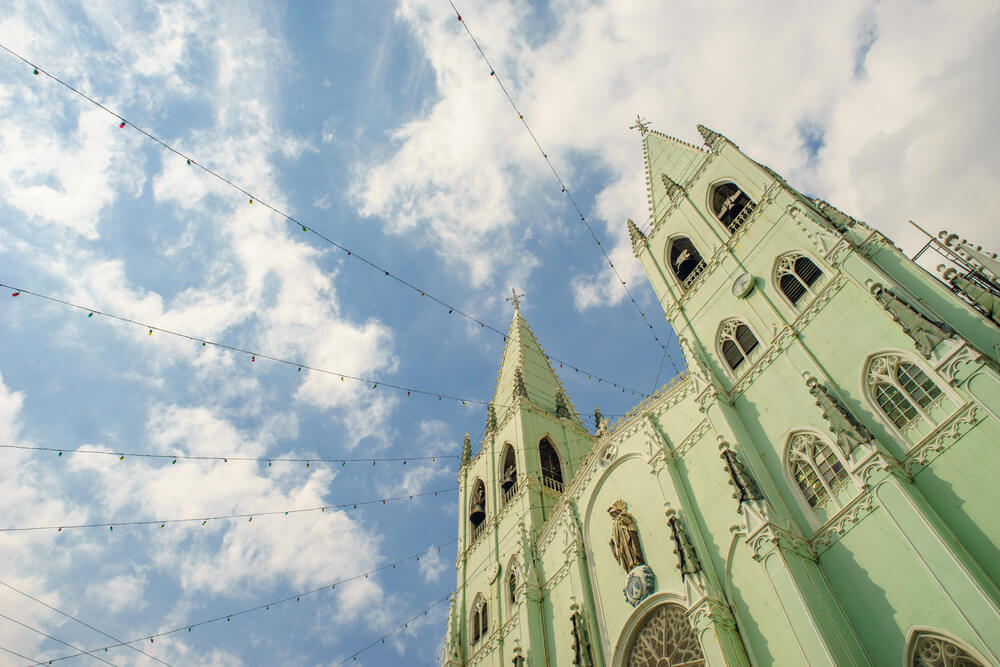


The only steel church building in the country, San Sebastian was designed in the Gothic Revival style marked by decorative patterns and finials. The Palace of Westminster, home to the British Parliament, and Germany’s Neuschwanstein Castle are two of the best examples of this movement.
San Sebastian Church was completed in 1891 and declared a National Cultural Treasure by the National Museum in 2011. It was removed from the UNESCO tentative list of World Heritage Sites because of structural decay. The church then had a massive restoration to be re-included. However, it was found out in 2018 that a 31-story residential condominium was being planned beside it. Reports said the developers had managed to secure clearance from the barangay chairman without heritage or site planners being consulted.
5. Manila Cathedral
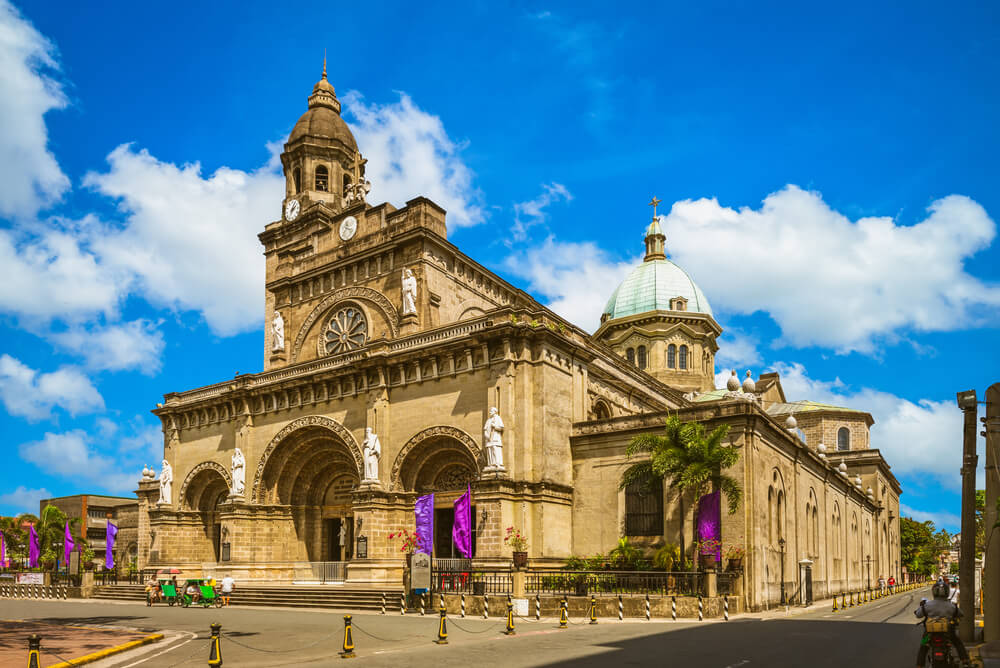


The Manila Cathedral was first built as a parish church in the 1571, designated a cathedral nine years later, and was destroyed during World War II. The cathedral we know today is the eight construction. The cathedral is dedicated to the Virgin Mary and has a nine-foot bronze statue designed by Italian sculptor Vincenzo Assenza. It may be the most recognizable church in the Philippines, often featured in tourism videos and Manila tours, as it located near one of the gates of the walled city of Intramuros.
6. Guadalupe Church
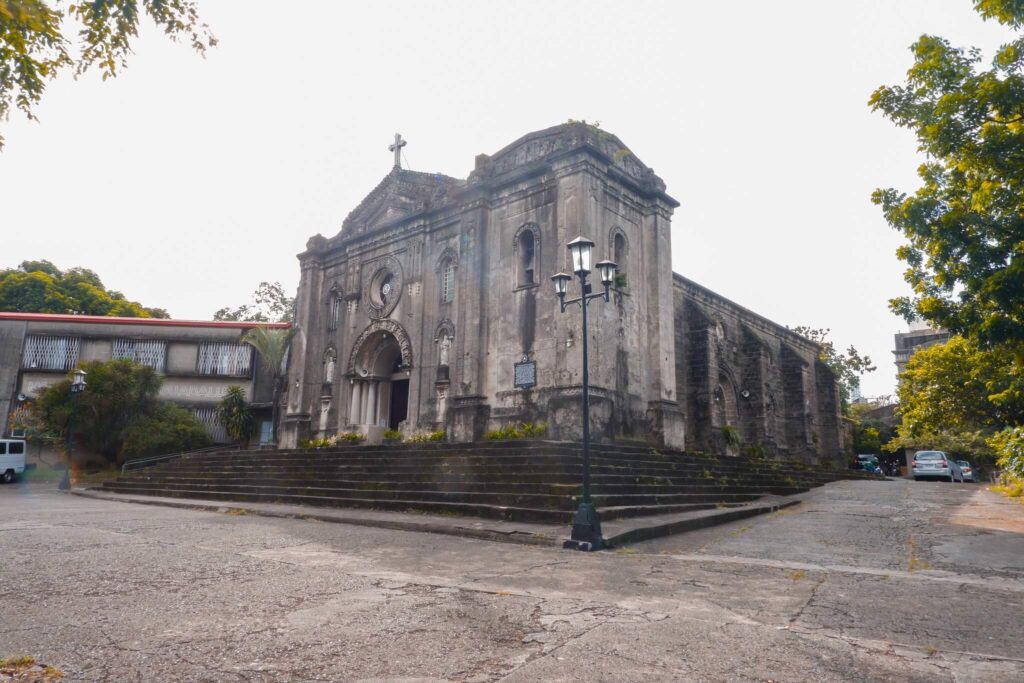


The Nuestra Señora de Gracia Church or Guadalupe Church in Makati is Baroque in style. Originally named Our Lady of Grace, it was renamed Guadalupe in 1603 from people’s devotion to the Virgin Mary in Extremadura, Spain. According to historical notes, “devotees from Spain and Mexico thronged into the sanctuary of Guadalupe to pay their respects to the Virgin. It became such a habitual courtesy that the authorities were forced to put up a landing dock at the foot of the hill by the river. A wooden house and a stairs of stone of around one hundred steps were built in order to accommodate the pilgrims who in turn never failed to donate money.”
7. Paco Church
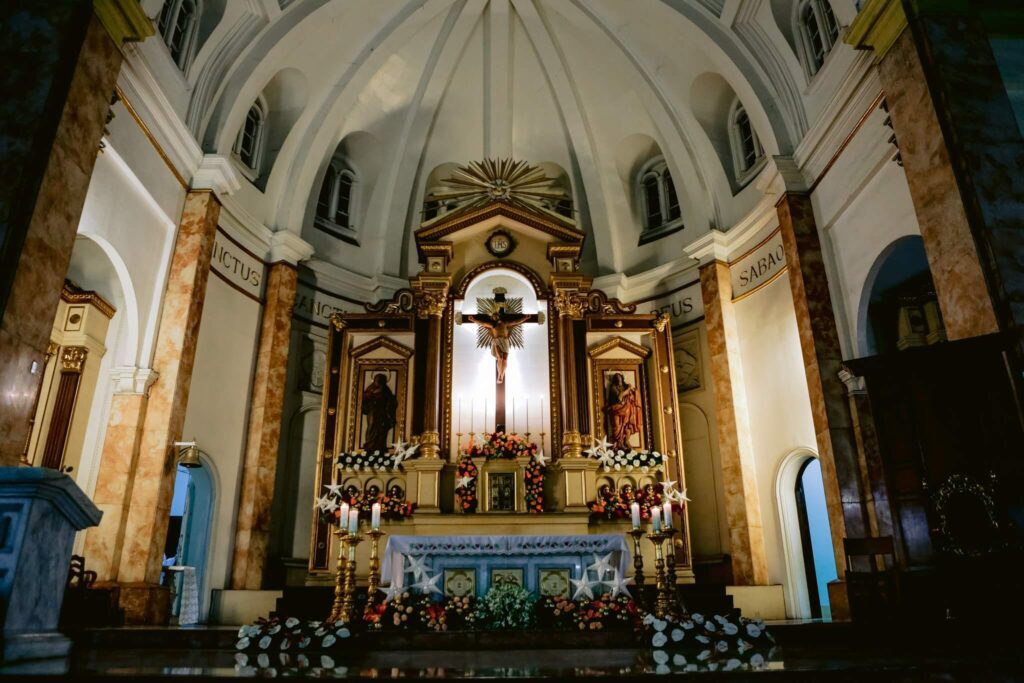


The San Fernando de Dilao Parish or Paco Church was first built from nipa and bamboo and dedicated to Our Lady of Purification. It was one of the churches burned down during the British Occupation of Manila during the Seven Years’ War; then destroyed again during the Philippine-American War. Finally, a new church was built in 1931. The structure features twin belfries flanking the church and designed in Neoclassical style with Corinthian columns and a triangular pediment.


